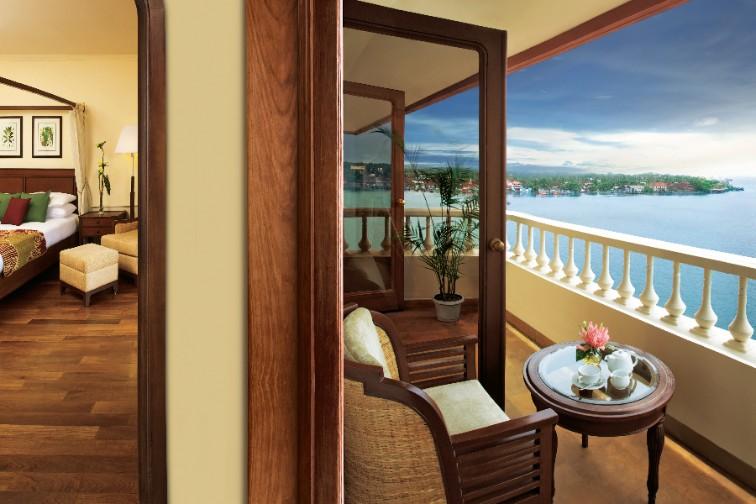
Hotels
•03 min read

Nestled amidst mighty rivers, some islands are more than just landforms—they are thriving ecosystems and cultural hubs. Majuli, recognized as the largest river island in the world, is a captivating destination that masterfully blends natural beauty with rich cultural heritage. Located in the Brahmaputra River in Assam, India, this island is globally significant for its size, vibrant traditions, and ecological distinctiveness. In this post, we answer frequently asked questions about Majuli and other notable river islands, exploring their geography, history, culture, and ecological importance.
A river island is defined as a landmass entirely surrounded by a river. Majuli qualifies as the largest river island in the world due to its expansive area formed by the dynamic waters of the Brahmaputra River. Not only does it hold the title of the world's biggest river island, it is also celebrated as the largest inhabited river island, making it uniquely special among natural river islands globally. When compared to other large islands on earth, Majuli’s sheer scale and cultural vibrancy set it apart from its counterparts.
The creation of Majuli is a masterpiece of nature. The island was formed through decades of sediment deposition brought by the mighty Brahmaputra, coupled with the natural processes of erosion and river dynamics. This ever-changing landscape still evolves today, as river erosion continuously reshapes the island’s boundaries. Its position in one of Asia’s most active river systems underlines its geological importance and the challenges it faces.
Majuli has long been the epicenter of Assamese culture, particularly renowned for its Neo-Vaishnavite heritage. The island is dotted with numerous Satras, traditional monasteries that serve as centers of art, education, and spiritual enlightenment. These institutions have not only preserved age-old traditions but also continue to influence the island’s identity, making Majuli a living repository of Assam’s cultural legacy.
Festivals on Majuli are a vibrant celebration of life and history. The island comes alive during festivals such as Raas Mahotsav, which showcases traditional dance, music, and performances that narrate ancient tales. These events are deeply ingrained in local life and attract curious travelers seeking an authentic cultural experience steeped in tradition.

Majuli is not only a cultural treasure but also an ecological haven. The island boasts a rich tapestry of biodiversity, where myriad species of flora and fauna find refuge. Its expansive wetlands provide a habitat for diverse species, underscoring the island’s role as a crucial ecological sanctuary. The integration of wildlife with human settlement offers a rare glimpse into sustainable living.
Despite its natural beauty, Majuli faces significant ecological challenges. River erosion is a constant threat that compromises its size and stability. Furthermore, climate change and human activities have intensified these natural pressures, highlighting the urgent need for conservation efforts. Various initiatives are underway to preserve this natural gem, aiming to balance human activity with ecological sustainability.
While Majuli stands tall as the largest river island in the world, other notable river islands add to the rich tapestry of global natural wonders. For instance, Bananal Island in Brazil and Umananda Island in India each offer their own unique landscapes and cultural narratives. These islands differ not just in size but also in their modes of habitation and ecological roles, providing travelers with diverse experiences among the world’s biggest river islands.
Beyond the well-known giants, there exist smaller, unique river islands that captivate with their unusual ecosystems. Some islands are celebrated for being the smallest river island, while others are famous for harboring rare species or unique natural formations. These hidden gems encourage travelers to explore beyond the mainstream, unearthing river island facts that enrich our understanding of these natural wonders.
Majuli is not only the largest river island in the world but also the largest inhabited river island globally, with a population of over 150,000 people living in harmony with nature.

Majuli, located in the Brahmaputra River in Assam, India, holds the title of the largest river island in the world.
Majuli is situated in the northeastern state of Assam, India, within the Brahmaputra River.
Majuli is unique due to its size, status as the largest inhabited river island, rich cultural heritage, and ecological significance.
Majuli faces significant challenges from river erosion, which threatens its size and the livelihoods of its inhabitants.
Yes, other notable river islands include Bananal Island in Brazil and Umananda Island in India, each offering unique landscapes and experiences.
In summary, Majuli's status as the largest river island in the world is matched by its deep cultural roots and vibrant ecological life. Its dynamic formation, from sediment builds to erosion challenges, paints a picture of nature in constant evolution. Beyond its geographical superiority, the island is a living museum of Assamese culture and traditions, offering insights into sustainable living alongside nature. Preserving such natural river islands is vital for maintaining cultural heritage and biodiversity for future generations.